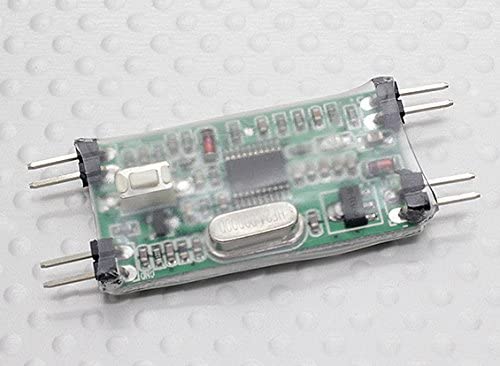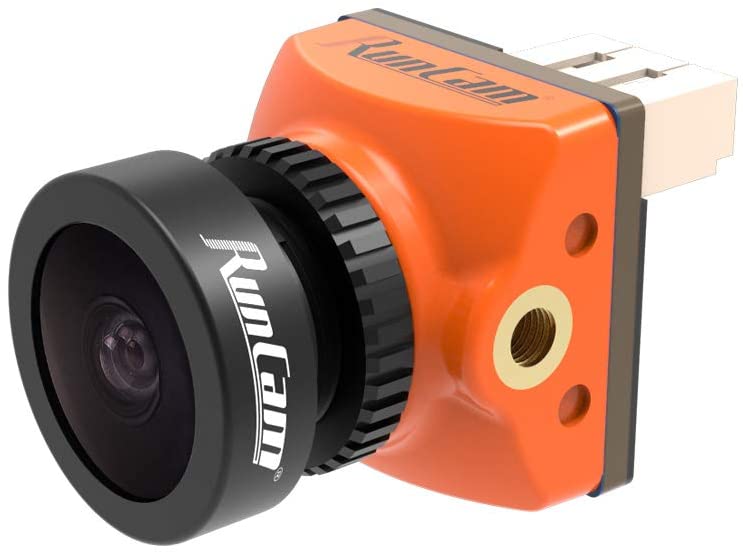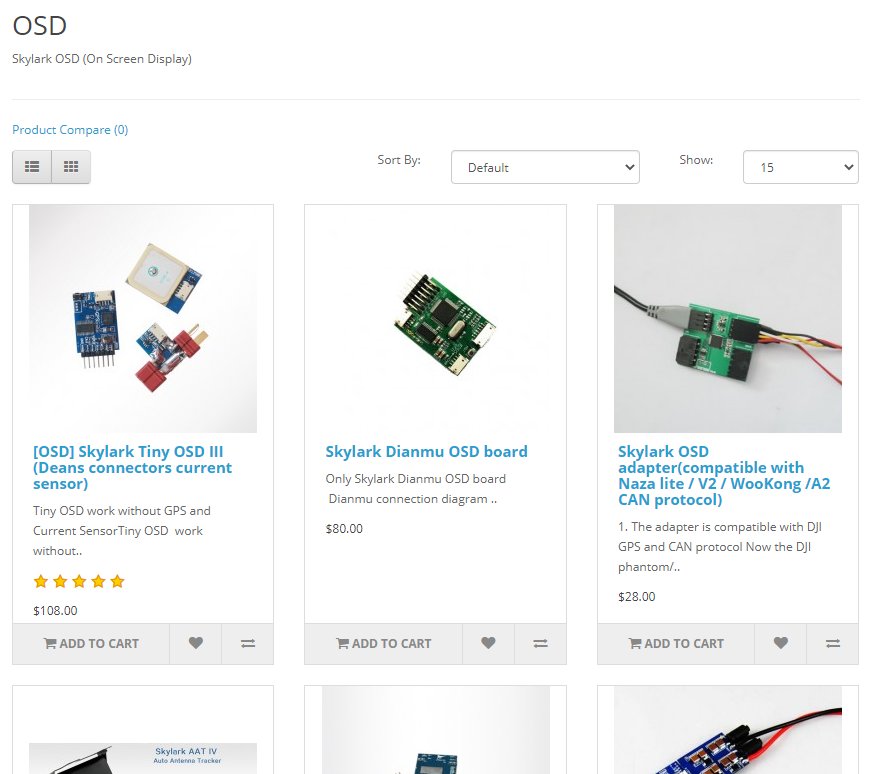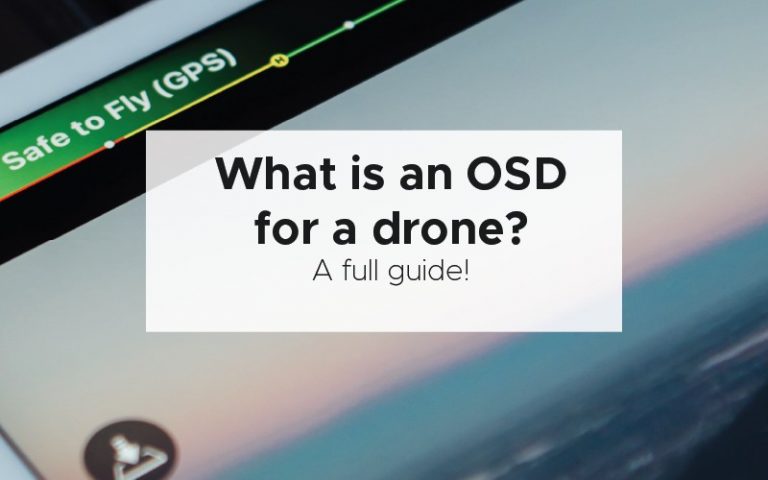On-screen display is a fantastic addition to your drone first person view monitor. If you have a commercially available drone such as one from DJI you will already have a lot of information on the first person view video feed. This will include information like the battery level, height, GPS location and other flight critical information. However, if you are building your own first person view drone you may need to include an external device in the form of a small printed circuit board. Some other devices, such as fly controllers and cameras, can include the on-screen display hardware.
OSD stands for on screen display. The on-screen display shows you flight information overlaid onto your first person view video feed. You can overlay information such as battery voltage, current, any warnings, flight mode, GPS, artificial horizons, and much more.
In this article we are going to go over the commonly asked questions about on-screen displays and the best hardware that you can buy if you are building your own on-screen display first person view racing drone. Getting on-screen display is not necessary for flying. But it is a very awesome addition to rating drones. Getting a simple OSD display means that you can monitor the easy to damage lithium polymer batteries. For example, if you let a lithium polymer battery run to 0 you have completely destroyed the battery.
Let’s first turn our attention on how to you implement on-screen display in a drone.
How do I get OSD
For drones, the on-screen display hardware can exist as an external printed circuit board which you integrate into the devices electronics. An example of this external on screen display printed circuit board is the Micro MimimOSD. This is a minimal Arduino based on-screen display board. It comes at a very low cost of about eight US dollars and it looks like the team behind this printed circuit board addition have really listened to the community by reengineering the board so that every usable pen was easily available without the use of surface soldering. As an example, the setup instructions are found here – click here.
Another way to add on-screen display to your drone is to buy a flight controller or camera that has the on-screen display hardware built into it. For example you can get an integrated flight controller from Betaflight. Betaflight on-screen display allows you to use drag and drop configuration to place values on your screen. You can also get on-screen display information built into the cameras. For example the run cam Swift Micro 2 has an integrated on-screen display with a low-voltage alarm which is suitable for stopping you from running your lithium polymer battery completely dry. As once it is depleted completely it is no longer useful.
Quite often if you have a built-in on-screen display in a camera it will only display very minimal data such as the lithium polymer battery voltage and a timer.
Information displayed
The source of information that an on-screen display can show you is:
- timer – depending on the type of on-screen display that you have purchased and installed this could be “flight time” or “on time”.
- Battery voltage – this is property one of the most important features of an on-screen display and nearly all units support reading the voltage from the battery. The battery voltage readout will remind you to land before you are over discharging the battery. A completely depleted lithium polymer battery is a dead battery.
- Current – you will be able to measure how much current is being drawn from your lithium polymer battery and the total milliamp hours consumed during a flight. This is actually a far better indicator of how much capacity you have remaining than battery voltage.
- Radio signal strength – the RSSI is an indication of the radio signal strength displayed as a percentage. This will tell you when you have to get closer to the remote control because of issues with your range.
- Warnings – some on-screen displays allow you to set up alarms to let you know when critical flight values are reached.
- GPS – the GPS data is incredibly important as it allows you to get altitude data as well as the coordinates of your drone. You can also get the grand speed of your drone as well as recording of the takeoff point and home direction. This is really important and I have been saved a number of times by the home point being recorded. It is very easy to get the disorientated.
- Flight mode – if you are a pilot that regularly switches between flight modes then this could be the perfect readout for you to make sure that you are always in the flight mode that you expect.
- Artificial horizon – an artificial horizon is a centre line in the screen which will tell you where the drone is orientated relative to the horizon.
The downside of on-screen display for drones
There are many form factors that the integrated circuit board and on-screen display cameras can take. Although there are many benefits to using an on-screen display the extra hardware that is required to deliver it can add a little bit of weight to your drone.
Many drone racing pilots prefer to keep their drone as light as possible and choose for a lower form factor camera to keep the weight down. This is understandable since any little bit of extra weight will affect how fast the drone can fly due to the extra power required by the motors.
If you are racing your drone you may want to consider a lighter form factor printed circuit board or camera so that you keep the weight down.
What is mini OSD?
Because of the weight issue that has been mentioned above mini OSD systems are designed to keep the weight of the OSD hardware as light as possible. They have been especially designed with small micro planes or any other drone where saving weight is crucial in mind.
The super simple on-screen display is a popular option for people wanting to keep the cost and the weight down. With the limited weight and size it often can only show you battery voltage and a timer.
What does OSD off mean?
If your drone is displaying an OSD off display message it means that the on-screen display is turned off. If you see this message it is likely that you can turn on the on-screen display information so that you are more aware of the metrics of your flight and you can avoid unnecessary headaches such as a completely discharge lithium polymer battery. If your drone has on-screen display already enabled I don’t know why you wouldn’t want to see the information considering that it is being collected by the hardware of the drone.
In my opinion, knowledge is power and the more information you have while flying the better. In some instances the amount of information changing on the screen can be distracting to your first person view flight but if you’re on-screen display allows change the layout to suit you and the information you want to see.
FPV OSD with Artificial horizon
The on-screen display can also include an on-screen horizon. This is an artificial horizon which is displayed as a line in the centre of the screen. This shows you where the horizon is and allows you to determine the orientation of your drone relative to the horizon.
To display an artificial horizon the drone relies on the accelerometer. This means that if some reason that you need to disable the accelerometer you will also disable the virtual horizon feature of your on-screen display. Most first person view drone pilots fly in acro mode. Acro mode is where the accelerometer is turned off which allows the processor to focus on processing the flight. If you are in acro mode the artificial horizon will not work.
Best OSD for FPV drones
Here are some of the most popular on-screen display circuit boards for first person view drone pilots and racing pilots.
Super simple OSD
The super simple mini OSD is very easy to install and configure. It connects directly between your cameras video out and the transmitters video in. In that way it acts like a physical overlay and easy to wire. It is very inexpensive and weighs only 4 g. Two of these units can be used together to display voltage for up to 4 individual lithium polymer batteries. It displays a voltmeter and a stopwatch and supports NTSC and PAL.

Check out this YouTube video for a more detailed review of this OCD circuit board:
https://www.youtube.com/watch?v=cQ8Iy0PEsy4
RunCam Racer Nano 2 FPV Camera

This camera is popular as it does well in lowlight for example in dusk and when it gets dark. It is a very small form factor which means that it will keep your drone light. One user reported that there is about 1 mm less in depth which is perfect when you are squeezing it into a tight build.
Betaflight OSD
The betalight on-screen display is an integrated component and is featured in betalight flight controllers. It overlays important flight data onto your first person view feed and is highly configurable. The great thing about this OSD is that it is much cheaper and is solder free. The betaflight OSD is integrated in the flight controller. There are also people saying that the configuration is much easier as all of the on-screen display configuration can be done in the beater flight interface. So this means that you don’t have to get any third party software involved and there is no extra firmware required for the OSD module.
Definitely worth considering if you are wanting an easy and cheap way to get on-screen display information onto your flight
Skylark OSD
Skylark have a range of OCD’s that are suitable for nearly everyone. The tiny OSD is an on-screen display that provides essential flight data during a first person view flight mission. The OCD is can show speed, altitude, distance, home and navigation angle, GPS signal, battery power voltage, battery power current, and milliamp hours consumed.

Conclusion
So, there is what an OSD stands for in terms of drones. Having an on-screen display is a common feature of many consumer drones and if you are building your own it makes sense to include an OSD feature so that you can monitor all of the important aspects of your flight.
Good luck in choosing the best on-screen display features for your drone and happy flying!




